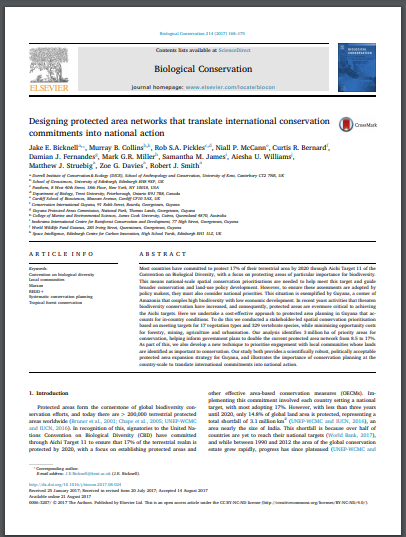
Here we undertake a cost-effective approach to protected area planning in Guyana that accounts for in-country conditions. To do this we conducted a stakeholder-led spatial conservation prioritisation based on meeting targets for 17 vegetation types and 329 vertebrate species, while minimising opportunity costs for forestry, mining, agriculture and urbanisation. Our analysis identifies 3 million ha of priority areas for conservation, helping inform government plans to double the current protected area network from 8.5 to 17%. As part of this, we also develop a new technique to prioritise engagement with local communities whose lands are identified as important to conservation. Our study both provides a scientifically robust, politically acceptable protected area expansion strategy for Guyana, and illustrates the importance of conservation planning at the country-scale to translate international commitments into national action.














